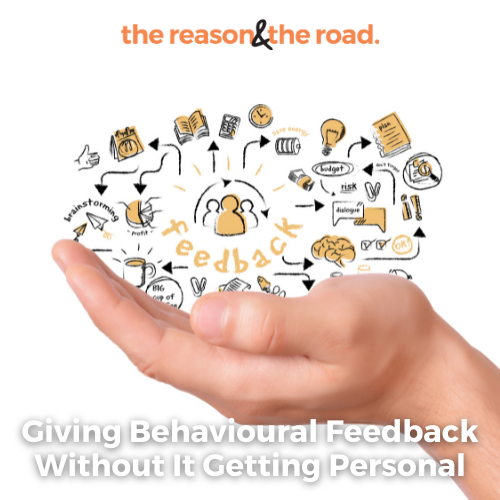
Why Team Days Don’t Work and What You Can Do Instead
November 11, 2020
Why Total Trust Of Each Other In Teams Is Not The Goal
December 1, 2020This week I’ve been thinking a lot about rules. I’m not really a rules kind of guy. You probably noticed. And but I’m just right in the middle of doing a course on Complexity Theory. Like what’s a team coach doing a course on complexity theory, here’s the reason why is because I’ve increasingly come to realise that the teams I’ve been working with, and the context that they’re in, cannot be explained, or they cannot solve the problem just through applying a linear consulting approach.
So here’s the typical linear consulting approach:
What’s the problem? What’s the context?
What’s the problem? What are all the solutions?
Let’s generate solutions, Let’s prioritise and choose one, implement the action, plan result… Happy Days.
Nature of Systems
Now, what I’m realising is that when I run that process, mostly with teams that it falls a bit flat. And it falls flat, because the reality is the system they work in is actually more complex. And that there’s a lot more moving parts, and they’re in the system and every time they’re working within it, they’re changing it.
So what I want to talk to you about today is the nature of systems that you’re in. And if they’re human systems, if they’re social systems, where people are interconnecting with one another over time. They are more like complex systems that are continually changing, as humans are. And so when it comes to setting rules for those systems, it’s really important that you are aware of the impact of those rules on the behaviour that it creates, and how it constrains behaviour, but also creates freedom in people.
Power of the Team
What I want you guys to sort of think about is when you set rules in your team, behaviour rules, so let’s say, someone isn’t behaving the right way, or doing the right thing. How do you tend to go about it in your team? How do you tend to engage in that process?
I want you to kind of write down, just on a bit of paper, how would you actually go about doing that? How would you go about it?
And as you’re writing it down, I want you to reflect on is it kind of a linear process? Or is it kind of a stage like approach it process? Here’s the way people typically go about the process like that. I’ve done this before, as well. So we realise that in a team of people, there’s a whole set of interconnection relationships sideways between and actually, in some ways, those collective right relationships are actually the power of a team.
Now, what can happen over time is that either if you think about the nature of these connections between people, either there’s one or two or three people in the team and the way they connect with each other. There’s a personality conflict or a challenge, a personality difference and as a result of that, there’s a falling out. And bad behaviour happens as a result.
So we either get sort of behaviour inside the team. So kind of inter team or intra team as they call it. Or we get behavior with our external stakeholders – customers, suppliers, partners, and that’s behavior we don’t want.
So what do we do? Our thought is, well, you know what we need to get the team together. And what we’re going to do is we’re going to ask them to collectively build a set of agreements, a set of rules, and typically what this looks like is:
Ask the team, what behaviors they collectively care about. I’ve done it a lot of times. But what’s the result that you typically get from that? Typically, what you get is, like what you get when you go to the doctor, you get a prescription? And I would say, it’s usually a bunch of shoulds – we should do this, should do that, should do this. Or it’s usually can or can’t – we can do this, we can’t do that.
Think of yourself as a teenager. What happens when you get presented with a can and can’ts? What’s that natural human instinct for some of us, if we’re not inclined to follow the rules? We either find a way to push the boundaries, to break the rules or we go into our shell.
Because in this scenario, there’s a fear of failure, or getting it wrong. And in this scenario, there’s a desire to find out where the boundary is. So this training I’ve been doing this week, has got me thinking a lot about how that’s a broken system. When it comes to doing, or if we think about the way we do vision and values, often, what we do is because we see examples all around us, where there may not be exactly our definition of it, we use really specific behavioral prescriptions to try and get control of something that is inherently uncontrollable.
A different way…
If you think about it, rather than prescribing every can and can’t, and think about setting the boundary. So rather than moving from prescriptions, let’s go to being able to communicate the boundary. Let’s all behave in a way, if you communicate the boundary that’s safe, fair, and humane.
And if you tend to create rules that look like this, people tend to think of their children and behave like them. Because you’re telling them what to do. Children’s probably exaggeration, but it creates a response, that kind of response. In this one, you give people the freedom to work it out for themselves.The other thing about this way of doing it is it allows people to make sense of this for their own context. Their particular culture, or their organizational context where they sit in the organisation, the prescriptive way inhibits that freedom and creativity. We know that people will do that anyway and so we encourage them to make it real for themselves.
Summary
What I would love you to do is from watching this video on creating rules and agreements, where can you apply this in your organisation? What program could you apply to where you’re trying to get a behavior change?
Just remember, for most people, when there’s a problem around a large group of people behaving in a way that you need to be different. Our typical approach is to create should lists. And what they do is usually encourage those who want to push the boundary or enable people to go into this shell. I would, instead of creating a should list, communicate the boundary, communicate at a principle level, so that you enable people to work out what those principles mean for them, and treat them almost like an adult in terms of their ability implemented.
Leave me a comment or Get in Touch
I know that’s been insanely useful for me this week. And I hope that’s been insanely useful for you. I’ll be posting more information about some of the programs I’m running between now and Christmas to help get teams working in great teamwork and with clarity. Look out for those. Otherwise, have an amazing week and I will see you soon.
Cheers, guys. Bye.
When you are ready…. let’s work out if we are a good fit.
If you’re a growing mid size business and you want help to get more focus in your leadership team, scaling with people and systems or leading inside and outside your organisation, then click the link below. You’ll be taken to a super short survey and then asked to book in an initial 20-minute call where we can work out if what you need is aligned with the results I can deliver.
I look forward to the chat…




